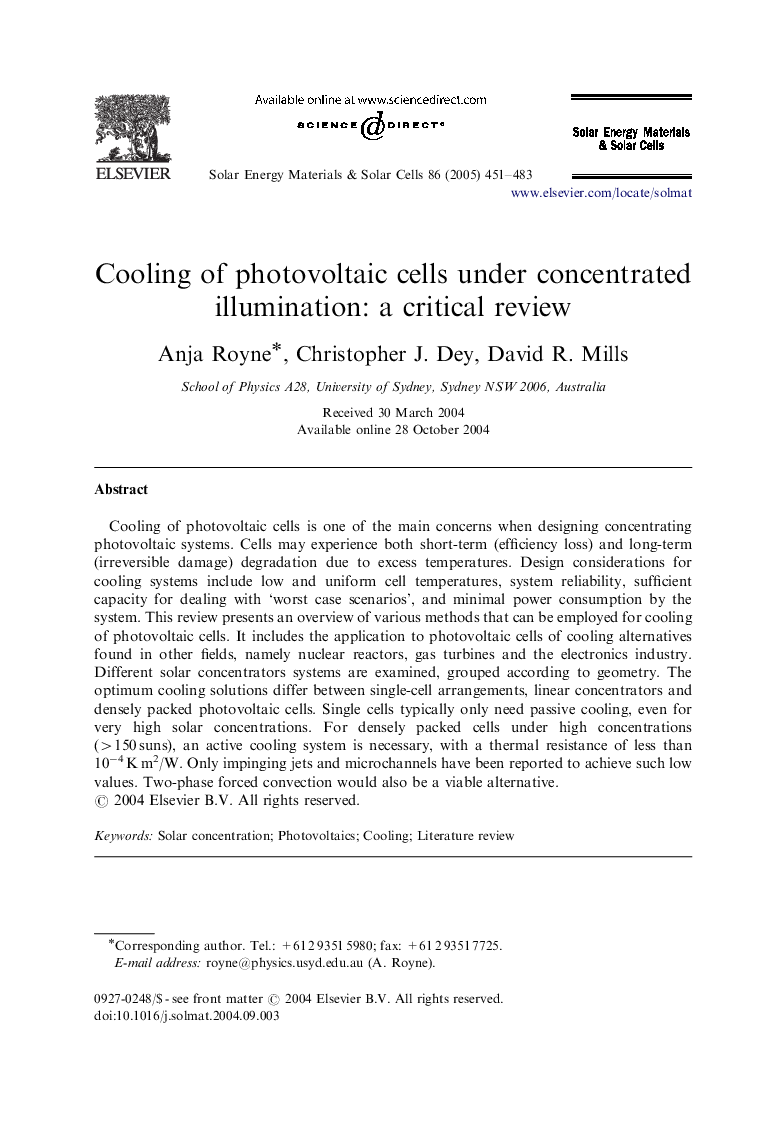| Article ID | Journal | Published Year | Pages | File Type |
|---|---|---|---|---|
| 10248960 | Solar Energy Materials and Solar Cells | 2005 | 33 Pages |
Abstract
Cooling of photovoltaic cells is one of the main concerns when designing concentrating photovoltaic systems. Cells may experience both short-term (efficiency loss) and long-term (irreversible damage) degradation due to excess temperatures. Design considerations for cooling systems include low and uniform cell temperatures, system reliability, sufficient capacity for dealing with 'worst case scenarios', and minimal power consumption by the system. This review presents an overview of various methods that can be employed for cooling of photovoltaic cells. It includes the application to photovoltaic cells of cooling alternatives found in other fields, namely nuclear reactors, gas turbines and the electronics industry. Different solar concentrators systems are examined, grouped according to geometry. The optimum cooling solutions differ between single-cell arrangements, linear concentrators and densely packed photovoltaic cells. Single cells typically only need passive cooling, even for very high solar concentrations. For densely packed cells under high concentrations (>150Â suns), an active cooling system is necessary, with a thermal resistance of less than 10â4Â KÂ m2/W. Only impinging jets and microchannels have been reported to achieve such low values. Two-phase forced convection would also be a viable alternative.
Related Topics
Physical Sciences and Engineering
Chemical Engineering
Catalysis
Authors
Anja Royne, Christopher J. Dey, David R. Mills,
